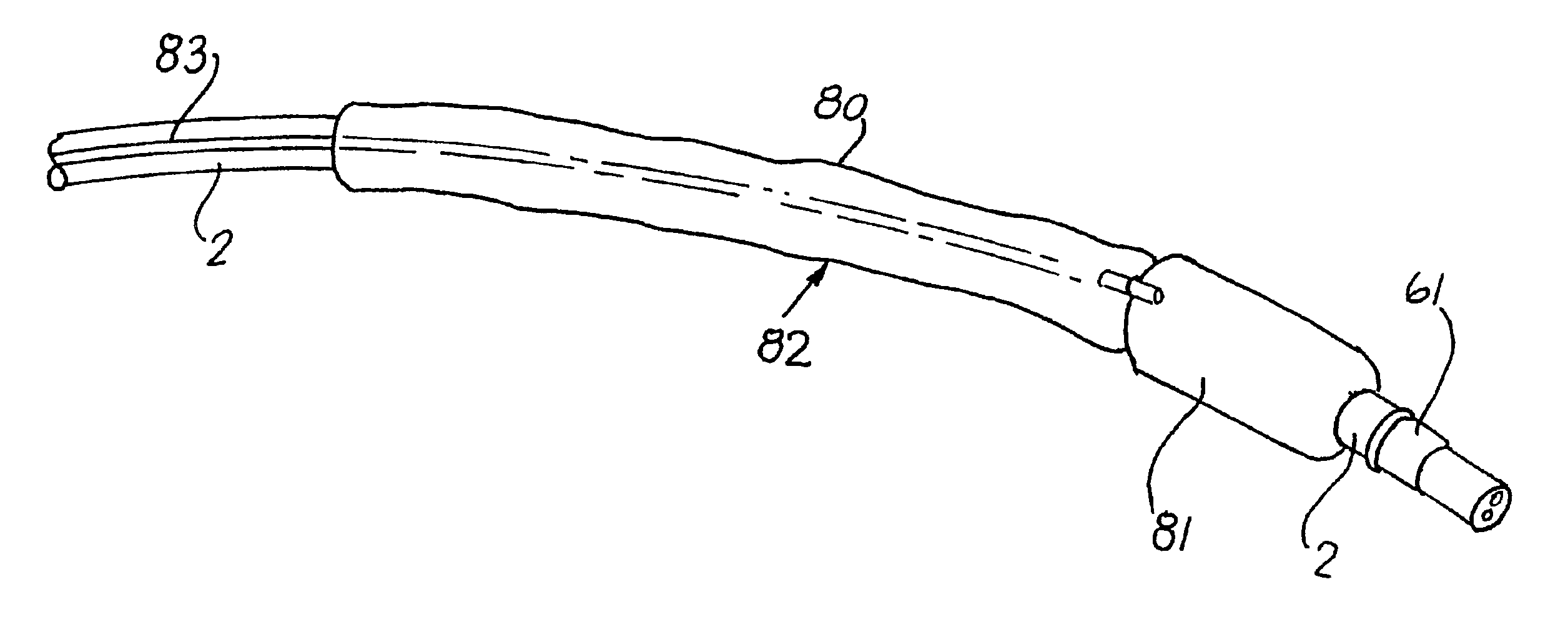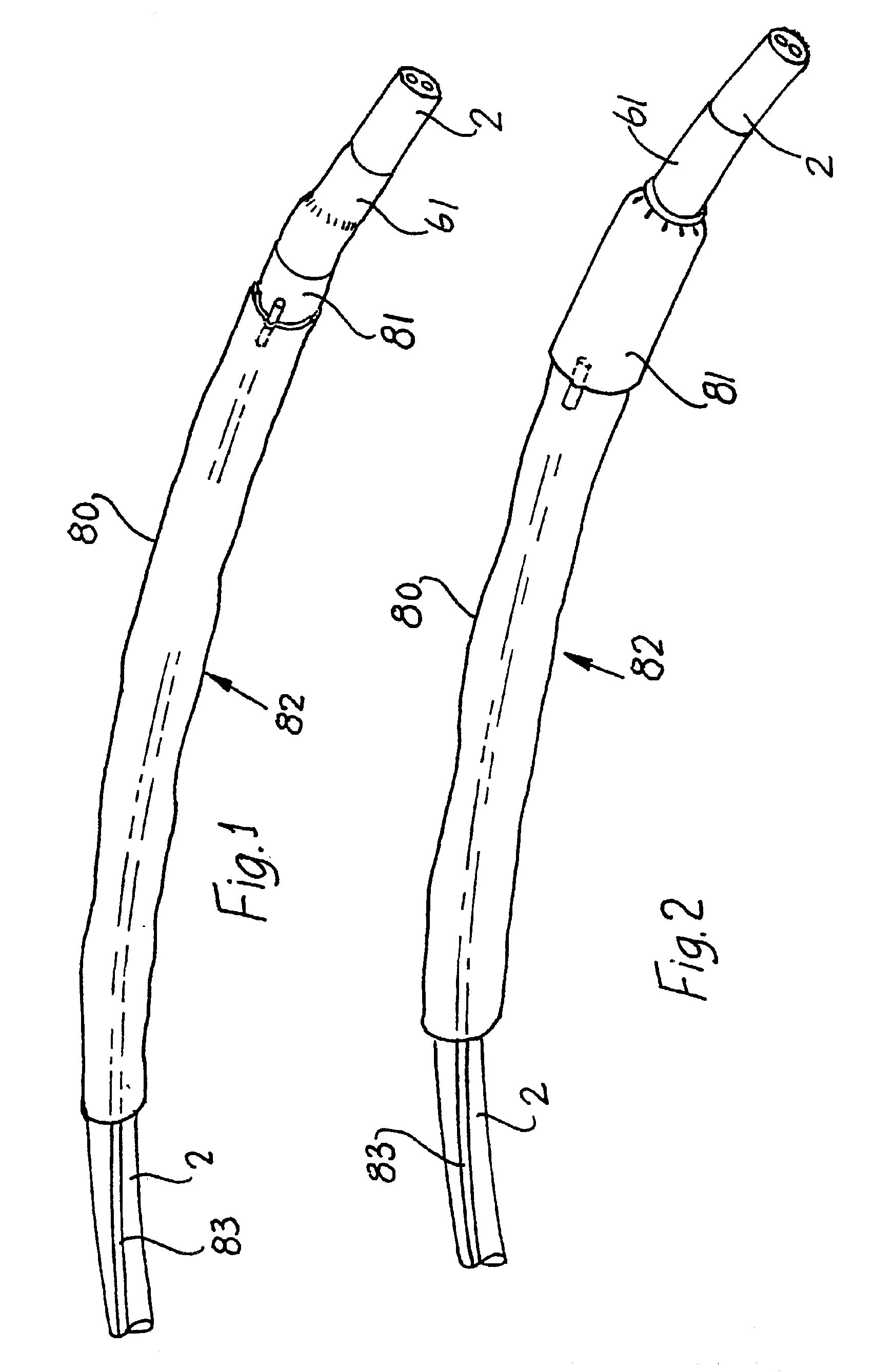Insertion device for an endoscope
a technology of endoscope and insertion device, which is applied in the field of insertion device, can solve the problems of unfixed sigmoid colon, difficult to cannulate the large intestine with a colonoscope, and difficult to achieve the more realistic anatomy of actual people,
- Summary
- Abstract
- Description
- Claims
- Application Information
AI Technical Summary
Benefits of technology
Problems solved by technology
Method used
Image
Examples
Embodiment Construction
Referring to the drawings there is illustrated an insertion device according to the invention to aid introduction of a probe and / or an overtube into a passageway.
Referring initially to FIGS. 1 to 24 there is illustrated an insertion device 82 according to the invention for aiding introduction of an overtube, the overtube in this case being used during a colonoscopy procedure. FIGS. 1 to 3 illustrate the device 82 mounted over a colonoscope 2. The device 82 comprises an elongate tubular sheath 80 for extending through a passageway, such as a colon in this case, with a holder to releasably hold the sheath 80 to the colonoscope 2. The holder comprises a distal fixation mechanism for holding the sheath 80 to the colonoscope 2 during insertion of the sheath 80 through a passageway, such as a colon, and an inflatable tubular clamp section 81 to hold the sheath 80 to the colonoscope 2 during insertion of an overtube into the sheath 80.
During insertion and withdrawal of the device 82 from a...
PUM
 Login to View More
Login to View More Abstract
Description
Claims
Application Information
 Login to View More
Login to View More - R&D
- Intellectual Property
- Life Sciences
- Materials
- Tech Scout
- Unparalleled Data Quality
- Higher Quality Content
- 60% Fewer Hallucinations
Browse by: Latest US Patents, China's latest patents, Technical Efficacy Thesaurus, Application Domain, Technology Topic, Popular Technical Reports.
© 2025 PatSnap. All rights reserved.Legal|Privacy policy|Modern Slavery Act Transparency Statement|Sitemap|About US| Contact US: help@patsnap.com



